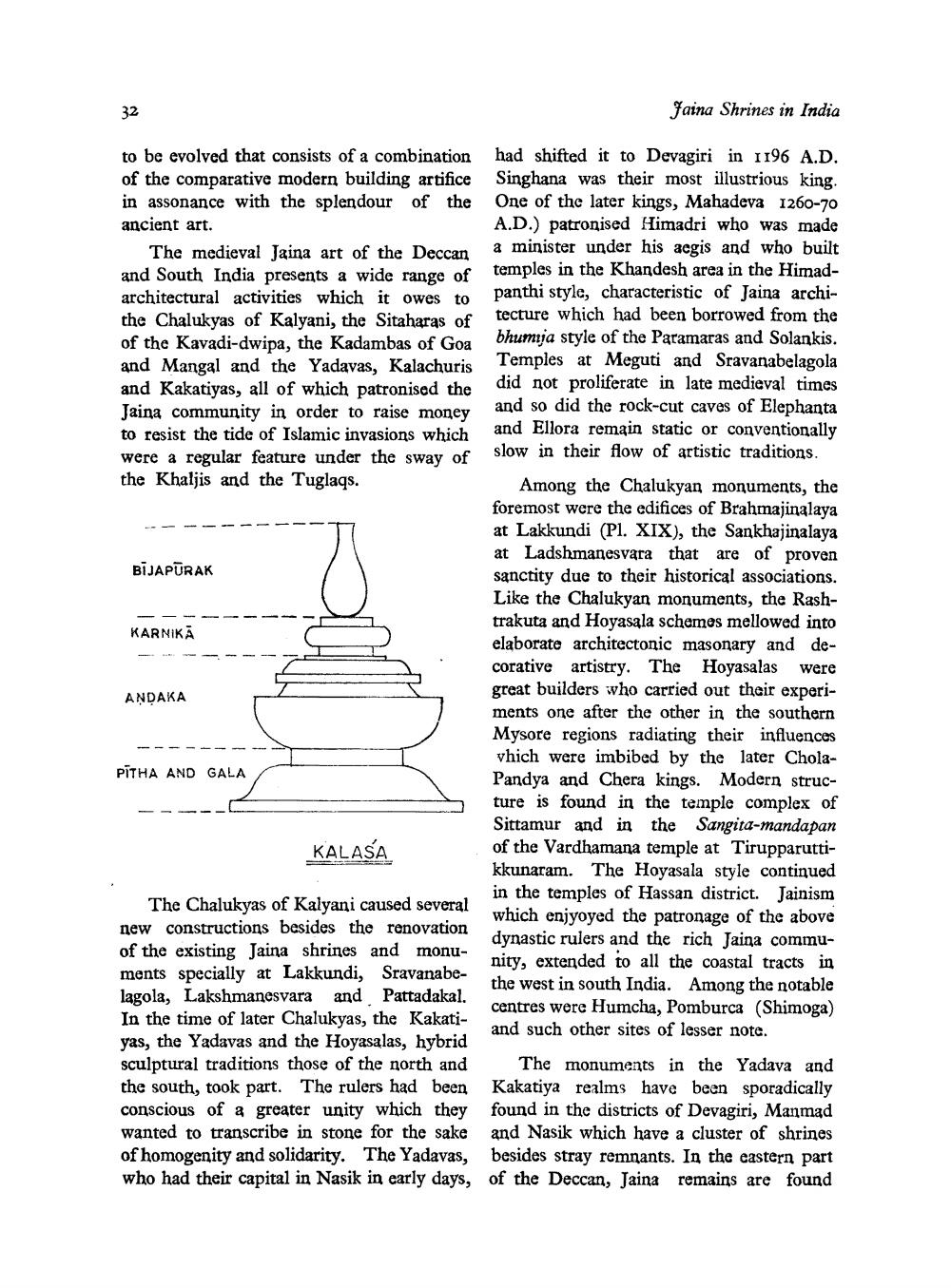________________
Jaina Shrines in India
-
-
--
-
to be evolved that consists of a combination had shifted it to Devagiri in 1196 A.D. of the comparative modern building artifice Singhana was their most illustrious king. in assonance with the splendour of the One of the later kings, Mahadeva 1260-70 ancient art.
A.D.) patronised Himadri who was made The medieval Jaina art of the Deccan
a minister under his aegis and who built and South India presents a wide range of
temples in the Khandesh area in the Himadarchitectural activities which it owes to panthi style, characteristic of Jaina archithe Chalukyas of Kalyani, the Sitaharas of
tecture which had been borrowed from the of the Kavadi-dwipa, the Kadambas of Goa
bhumija style of the Paramaras and Solankis. and Mangal and the Yadavas, Kalachuris
Temples at Meguti and Sravanabelagola and Kakatiyas, all of which patronised the
did not proliferate in late medieval times Jaina community in order to raise money
and so did the rock-cut caves of Elephanta to resist the tide of Islamic invasions which
and Ellora remain static or conventionally were a regular feature under the sway of slow in their flow of artistic traditions. the Khaljis and the Tuglaqs.
Among the Chalukyan monuments, the foremost were the edifices of Brahmajinalaya at Lakkundi (Pl. XIX), the Sankhajinalaya
at Ladshmanesvara that are of proven BIJAPURAK
sanctity due to their historical associations. Like the Chalukyan monuments, the Rash
trakuta and Hoyasala schemes mellowed into KARNIKĀ
elaborate architectonic masonary and de
corative artistry. The Hoyasalas were ANDAKA
great builders who carried out their experiments one after the other in the southern Mysore regions radiating their influences
vhich were imbibed by the later CholaPĪTHA AND GALA
Pandya and Chera kings. Modern structure is found in the temple complex of
Sittamur and in the Sangita-mandapan KALASA. of the Vardhamana temple at Tirupparutti
kkunaram. The Hoyasala style continued
in the temples of Hassan district. Jainism The Chalukyas of Kalyani caused several
which enjyoyed the patronage of the above new constructions besides the renovation
dynastic rulers and the rich Jaina commuof the existing Jaina shrines and monu
nity, extended to all the coastal tracts in ments specially at Lakkundi, Sravanabe
the west in south India. Among the notable lagola, Lakshmanesvara and Pattadakal.
centres were Humcha, Pomburca (Shimoga) In the time of later Chalukyas, the Kakati
and such other sites of lesser note. yas, the Yadavas and the Hoyasalas, hybrid sculptural traditions those of the north and The monuments in the Yadava and the south, took part. The rulers had been Kakatiya realms have been sporadically conscious of a greater unity which they found in the districts of Devagiri, Manmad wanted to transcribe in stone for the sake and Nasik which have a cluster of shrines of homogenity and solidarity. The Yadavas, besides stray remnants. In the eastern part who had their capital in Nasik in early days, of the Deccan, Jaina remains are found




